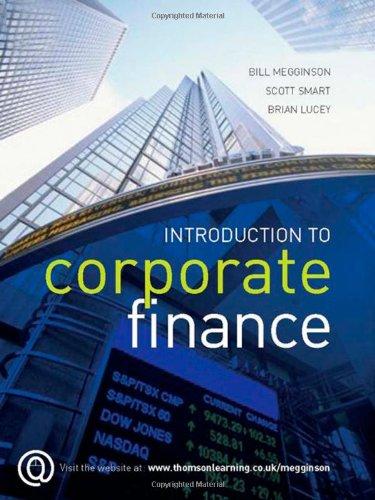Answered step by step
Verified Expert Solution
Question
1 Approved Answer
Read the article Statement on Longer-Run Goals and Monetary Policy Strategy to explain the details of Dual Mandate Policy carried out by the Federal Reserve.
Read the article Statement on Longer-Run Goals and Monetary Policy Strategy to explain the details of Dual Mandate Policy carried out by the Federal Reserve. The article can be viewed at : 
Statement on Longer-Run Goals and Monetary Policy Strategy Adopted effective January 24, 2012, as amended effective August 27, 2020 The Federal Open Market Committee (FOMC) is firmly committed to fulfilling its statutory mandate from the Congress of promoting maxi- mum employment, stable prices, and moderate long-term interest rates. The Committee seeks to explain its monetary policy decisions to the pub- lic as clearly as possible. Such clarity facilitates well-informed decisionmaking by households and businesses, reduces economic and financial uncertainty, increases the effectiveness of mone- tary policy, and enhances transparency and ac- countability, which are essential in a democratic society Employment, inflation, and long-term interest rates fluctuate over time in response to economic and financial disturbances. Monetary policy plays an important role in stabilizing the econ- omy in response to these disturbances. The Committee's primary means of adjusting the stance of monetary policy is through changes in the target range for the federal funds rate. The Committee judges that the level of the federal funds rate consistent with maximum employ- ment and price stability over the longer run has declined relative to its historical average. There- fore, the federal funds rate is likely to be con- strained by its effective lower bound more fre- quently than in the past. Owing in part to the proximity of interest rates to the effective lower bound, the Committee judges that downward risks to employment and inflation have in- creased. The Committee is prepared to use its full range of tools to achieve its maximum em- ployment and price stability goals. The maximum level of employment is a broad- based and inclusive goal that is not directly meas- urable and changes over time owing largely to nonmonetary factors that affect the structure and dynamics of the labor market. Consequently, it would not be appropriate to specify a fixed goal for employment, rather, the Committee's policy decisions must be informed by assessments of the shortfalls of employment from its maximum level, recognizing that such assessments are nec. essarily uncertain and subject to revision. The Committee considers a wide range of indicators in making these assessments. The inflation rate over the longer run is primar- ily determined by monetary policy, and hence the Committee has the ability to specify a longer-run goal for inflation. The Committee reaffirms its judgment that inflation at the rate of 2 percent, as measured by the annual change in the price index for personal consumption expenditures, is most consistent over the longer run with the Federal Reserve's statutory mandate. The Committee judges that longer-term inflation expectations that are well anchored at 2 percent foster price stability and moderate long-term interest rates and enhance the Committee's ability to promote maximum employment in the face of significant economic disturbances. In order to anchor longer-term inflation expectations at this level, the Committee seeks to achieve inflation that ay- erages 2 percent over time, and therefore judges that, following periods when inflation has been running persistently below 2 percent, appropriate monetary policy will likely aim to achieve infla- tion moderately above 2 percent for some time. Monetary policy actions tend to influence eco- nomic activity, employment, and prices with a lag. In setting monetary policy, the Committee seeks over time to mitigate shortfalls of employ- ment from the Committee's assessment of its maximum level and deviations of inflation from its longer-run goal Moreover, sustainably achieving maximum employment and price sta- bility depends on a stable financial system Therefore, the Committee's policy decisions re- flect its longer-run goals, its medium-term out- look, and its assessments of the balance of risks, including risks to the financial system that could impede the attainment of the Committee's goals, The Committee's employment and inflation objectives are generally complementary How- ever, under circumstances in which the Commit tee judges that the objectives are not complemen- tary, it takes into account the employment short- falls and inflation deviations and the potentially different time horizons over which employment and inflation are projected to return to levels judged consistent with its mandate. The Committee intends to review these princi- ples and to make adjustments as appropriate at its annual organizational meeting each January, and to undertake roughly every 5 years a thorough public review of its monetary policy strategy, tools, and communication practices https://www.federalreserve.gov/monetarypolicy/files/FOMC_LongerRunGoals.pdf

Step by Step Solution
There are 3 Steps involved in it
Step: 1

Get Instant Access to Expert-Tailored Solutions
See step-by-step solutions with expert insights and AI powered tools for academic success
Step: 2

Step: 3

Ace Your Homework with AI
Get the answers you need in no time with our AI-driven, step-by-step assistance
Get Started


